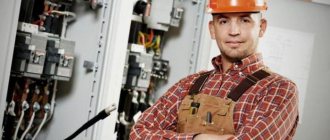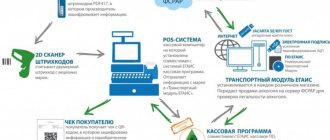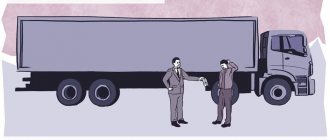Account 99 in accounting is used to accumulate information on income and expenses during the reporting period in order to form the final financial result for the year. From this article you will learn about the rules for generating the final financial result.
Purpose of account 99
Basic postings from account 99
Features of analytical accounting for account 99
Reflection of penalties
Results
Purpose of account 99
Throughout the year, account 99 accumulates information about profits/losses received both from the main activity and from other operations. At the end of the reporting year, the debit and credit turnovers on account 99 are compared, and the account is closed by writing off the balance on account 84.
You will receive more information about accounting for financial results by reading the article “Accounting and analysis of financial results.”
Accounting account 99 is active-passive, its debit reflects the resulting loss, and its credit reflects the profit. The main characteristics of accounting account 99 are contained in the Chart of Accounts, approved by Order of the Ministry of Finance dated October 31, 2000 No. 94n.
In accordance with Order No. 94n, during the year this account accumulates information about:
- profit and loss received from the main type of business activity (postings from account 90);
- other expenses and income for the reporting month (postings from account 91);
- penalties due on tax obligations, accrued contingent expenses, recalculation and permanent income tax obligations (entries from account 68).
For enterprises engaged in the field of agriculture, according to the Chart of Accounts, approved by Order of the Ministry of Agriculture dated June 13, 2001 No. 654, when comparing debit-credit turnover to determine the financial result on account 99, the following are also taken into account:
- income and losses arising from force majeure and other emergency circumstances, such as fire, natural disasters, etc. (entries with accounts that record relevant expenses).
Income from emergency situations can include insurance compensation received, income received from the sale of materials during the dismantling of destroyed buildings/structures. Expenses for such events include losses not compensated by insurers, including expenses associated with the liquidation of a natural disaster.
Determining the financial result for account 99 using an example
Based on the results of August 2020, Comfort LLC:
- goods sold for the amount of RUB 2,342,000, VAT RUB 357,254;
- cost of goods sold—RUB 1,052,000;
- warehouse, administrative, and transportation costs amounted to RUB 841,000.
The balance sheet of Comfort LLC as of 31..2015 contains the following information:
| Check | Balance by Dt | Balance by Kt | Description |
| 90.1 | RUB 2,342,000 | Revenue from sales of goods for August 2015 | |
| 90.2 | RUB 1,052,000 | Cost of goods sold | |
| 90.3 | RUB 357,254 | VAT on the cost of goods sold | |
| 44 | 841,000 rub. | Selling expenses |
Closing the period, the accountant of Comfort LLC made entries to close account 99:
| Dt | CT | Description | Sum | Document |
| 90.2 | 44 | Selling expenses are written off against the cost of goods | 841,000 rub. | Expense report |
| 90.9 | 99.01.1 | The amount of profit received is reflected (RUB 2,342,000 - (RUB 1,052,000 + RUB 357,254 + RUB 841,000)) | RUR 91,746 | Turnover balance sheet |
Features of analytical accounting for account 99
If there are significant turnovers on account 99, it is possible to create the following analytics for it (we will take as a basis the instructions contained in order No. 654):
- account 99.1 - profit/loss from the usual type of business activity (sale of finished products/goods, provision of services, etc.);
- account 99.2 - profit/loss from operating activities (sale of fixed assets, securities, intangible assets);
- account 99.3 - profit/losses identified from non-operating business operations (by comparing expenses/income on account 91);
- account 99.4 - emergency receipts (for example, if fire insurance is paid);
- account 99.5 - extraordinary expenses (loss of property during natural disasters);
- account 99.6 - payments to the budget for income tax and financial sanctions;
- account 99.7 - profit/loss in the reporting period (result identified by comparing aggregate data for sub-accounts 99.1–99.6).
However, it is not necessary to strictly follow these analytics. An enterprise (or individual entrepreneur) can develop it independently, taking into account its own detailing needs.
Subaccounts
The legislation does not provide for subaccounts to account 99. However, for a clearer classification of data, as well as based on the requirements of organizing accounting management in the accounting department, the following sub-accounts can be used:
- 99-1 - aggregation of information based on the results of the main activity of the enterprise (production, sale of goods, provision of services).
- 99-2 - combining financial results from other activities of the enterprise.
- 99-3 - for aggregating financial results from operations not related to the main production operations.
- 99-4 - income received as a result of emergency incidents.
- 99-5 - expenses and losses incurred as a result of emergency circumstances.
- 99-6 - here information is accumulated on the calculation of income tax, as well as penalties and interest on the state budget.
- 99-7 - this subaccount reflects the financial result that was obtained by comparing all profits and losses recorded in the remaining subaccounts.
Note! This list is not a complete list of all subaccounts 99. If necessary, the accountant has the right to organize accounting in the context of other types of information, open subaccounts of the 3rd or 4th level, and also assign them other names.
Reflection of penalties
As we have already found out, account 99 should reflect all amounts of tax penalties. Write-off of debt on them should also be reflected using account 99.
Postings:
- when calculating punitive tax sanctions - Dt 99 Kt 68;
- when transferring fines to the budget - Dt 68 Kt 51.
You will receive information about how financial sanctions are recognized from the article “What actions of the debtor confirm his recognition of sanctions?”
Loan correspondence
Account 99 “Profits and losses” interacts on the loan with the following categories:
- "Materials" (10).
- “Financial transactions with suppliers and contractors” (60).
- “Currency and current accounts” (52, 51).
- “Retained earnings” (84).
- “Sales of goods” (90).
- “Shortages and damage from damaged valuables” (94).
- “Reserves for future expenses” (96).
- “Special bank accounts” (55).
- “Intra-household calculations” (79).
- “Financial transactions with creditors and debtors” (76).
- “Other expenses and income” (91).
- “Settlements with employees for various operations” (73).
Is credit a profit or a loss? What does account credit 99 show?
Account credit 99 shows the company's income. Income is the sum of all income received by an organization into a bank account for a specific time interval. Income includes: revenue, profit from transactions with securities, interest received on deposits, income from leasing property, etc. The credit of account 99 is in correspondence with accounting accounts 90, 91, 73, etc. For example, income received from Sales of goods produced or services provided are reflected by posting Dt 90 Kt 99.
Thus, it is important to answer the question: is the credit of 99 accounts a profit or a loss? The loan shows the company's profit, i.e. it has a positive credit balance at the end of the reporting period.
Closing
Every month, the accounting department calculates financial results for all balance sheet accounts, and then their amounts are transferred to account 99 and accumulated there throughout the reporting period.
Closing scheme
Account 99 “Profits and losses” is written off only at the end of the reporting period (often the end of the year). Closing account 99 is the final posting on the last day of each year, otherwise called the reformation of balance sheet indicators. The reformation involves resetting subaccounts 90 and 91 (first stage) and resetting account 99 (second stage). Balance sheet reformation is carried out only when each transaction is entered into accounting.
Attention! After the reformation, no more entries are made, and the accounting department can generate a financial report for the reporting period.
How account 99 is closed depends on the current financial result. Closing is carried out by one of two possible transactions:
- Dt99 Kt84 - the implementation of this posting provides information about which account reflects the organization’s profit received in the current year.
- Dt84 Kt99 - this entry is made in order to reflect and write off the net loss of the enterprise in the reporting year.
Accounting entries
All completed entries to debit 99 describe the reflection, accrual and write-off of expenses, losses and expenses depending on their sources.
Correspondence with Section I reflects losses incurred as a result of emergency incidents in the value of:
- fixed assets of the enterprise - Dt99 Kt03;
- enterprise equipment intended for installation - Dt99 Kt07;
- non-current assets of the enterprise - Dt99 Kt08.
Correspondence with Section II accounts also reflects expenses incurred due to extraordinary circumstances in the value of:
- materials of the enterprise - Dt99 Kt10;
- fallen and forcedly slaughtered livestock - Dt99 Kt11.
The amount of value added tax is written off using the following entry - Dt99 Kt19.
Correspondence with Section III reflects losses and damages for various types of activities of the enterprise:
- for core activities - Dt99 Kt20;
- for semi-finished products of own production - Dt99 Kt21;
- for auxiliary activities - Dt99 Kt23;
- general expenses - Dt99 Kt25;
- general production expenses - Dt99 Kt26;
- for defects (uncompensated losses) - Dt99 Kt28;
- for service farms - Dt99 Kt29.
Correspondence with Section IV accounts reflects losses, losses, write-offs due to emergency circumstances:
- goods - Dt99 Kt41;
- finished products - Dt99 Kt43;
- sales expenses - Dt99 Kt44;
- shipped goods - Dt99 Kt45.
When posting entries to debit 99 with accounts from Section V, shortages and losses due to emergency circumstances are reflected:
- at the company's cash desk - Dt99 Kt50;
- on the company's current account - Dt99 Kt51 (based on a bank statement);
- on the enterprise’s foreign currency account - Dt99 Kt52 (based on a bank statement);
- financial investments of the organization - Dt99 Kt58.
Correspondence with Section VI reflects the accrual of income taxes or fines and penalties for other taxes:
- income tax - Dt99 Kt68;
Accounting for financial results
- fines and penalties for social payments - Dt99 Kt69.
Correspondence with a single account from Section VII closes the year and determines the profit, in which account it is reflected and what happens to it next - Dt99 Kt84.
The correspondence with Section VIII reflects the write-off of the remaining losses of the enterprise:
- results from the main activities - Dt99 Kt90 (write-off is also carried out in the context of subaccounts 90);
- assignment of costs from the sale of fixed assets to deferred losses - Dt99 Kt91 (write-off occurs in the context of subaccounts 91);
- recognition of the resulting shortages as extraordinary expenses - Dt99 Kt94.
The organization makes entries on credit 99 of the account, the profit or loss of which is reflected depending on their sources:
Correspondence with Section II reflects the acceptance for accounting of identified surplus materials as a result of emergency circumstances - Dt10 Kt99.
Correspondence with Section V is carried out when reflecting amounts of income as a result of emergency incidents:
- to the organization's cash desk - Dt50 Kt99;
- to the company's current account - Dt51 Kt99 (based on a bank statement);
- to the enterprise's foreign currency account in foreign currency - Dt52 Kt99 (based on a bank statement);
- to a special account of the organization - Dt55 Kt99 (based on a bank statement).
Another item of income is the write-off of the amount of accounts payable that cannot be repaid as a result of emergency incidents - Dt60 Kt99.
Correspondence with Dt84 reflects the write-off of the loss of the current period as undistributed - Dt84 Kt99.
Correspondence with Section VIII reflects the accounting of other types of profit and income of the enterprise:
- from key activities - Dt90 Kt99 (also carried out in the context of subaccounts 90);
- reflection of the turnover of the reporting month - Dt91 Kt99 (in terms of subaccounts 91);
- excessively accrued reserve amount for repairs of fixed assets - Dt96 Kt99.
Stages of the account closure procedure
An example of postings: in September 2019, a trading organization sold products in the amount of 1,000,000 rubles, including value added tax - 200,000 rubles. This operation will be reflected in accounting in the following form:
- Dt62 Kt90 - reflection of revenue for goods sold (RUB 1,000,000);
- Dt90 Kt68 - VAT calculation (RUB 200,000);
- Dt51 Kt62 - crediting proceeds to the organization’s current account (RUB 1,000,000);
- Dt68 Kt51 - transfer of VAT amount to the state budget (RUB 200,000);
- Dt90 Kt99 - reflection of profit (800,000 rubles).
Complete and correct formation of records in account 99 will provide the enterprise with adequate information about the results of its activities, will help not only to generate one of the most important accounting reports - the profit and loss statement - but also to help the manager analyze the organization’s activities and make the right management decisions for improving the functioning of the enterprise.
Savings account 99 in accounting is practically used to generate information about the financial results of any company, regardless of its legal status or industry sector. Data is summarized for a certain reporting period for all types of activities - main and additional. Let's consider what is reflected in the 99th account and in what order.
The main goal of a commercial organization is to make a profit. Moreover, each business operation affects the amount of income and expenses, and for the summary accumulation of information, account 99 “Profits and losses” is used. For the entire year, it accumulates information on:
- Profit or loss from 90 accounts. according to the main OKVED.
- Profit or loss from 91st account. according to additional OKVED.
- Conditional income/expenses involved in tax calculation.
- Accepted fines, arrears and PNO/ONA (when working according to PBU 18/02).
Accounting account 99 is the last step towards reforming the balance sheet. The final posting resets the balances to zero by transferring the resulting amounts to the account. 84. And also business transactions on account 99 reflect the write-off (capitalization) of losses (surpluses) of inventory and fixed assets received in emergency or force majeure circumstances (emergency situations, natural disasters, wars, etc.).
Account 99 – subaccounts:
- 99.1 - used to reflect financial results according to the company’s usual OKVED.
- 99.2, 99.3 – used to reflect financial results for other OKVED.
- 99.4 – to reflect extraordinary income.
- 99.5 – to reflect extraordinary expenses.
- 99.6 – to reflect the amounts of profit tax and penalties.
- 99.7 – the amounts of financial results for the reporting period are reflected here.
- 99.9 – other amounts of financial results may be reflected here.
It should be noted that account 99, the characteristics contained in Order No. 94n dated October 31, 2000, can be grouped in another way, taking into account the analytical needs of the organization and the nuances of filling out reliable and complete accounting records.
Correspondence with other accounts
Account 99 corresponds with many accounts in accounting. For debit 99, the corresponding ones are:
- Section 1 “Non-current assets” -03, 07, 08.
- Section 2 “Inventory” - 10, 11.
- Section 3 “Production costs” - 20, 21, 23, 25, 26, 28, 29.
- Section 4 “Finished products and goods” - 41, 43, 44, 45.
- Section 5 “Cash” - 50, 51, 52, 58.
- Section 6 “Calculations” - 68, 69.
- Section 7 “Capital” - 84.
- Section 8 “Financial results” - 90, 91, 94.
Typical correspondence
Correspondence regarding the loan goes as follows:
- Section 2 “Inventory” - 10.
- Section 5 “Cash” - 50, 51, 52, 55.
- Section 6 “Calculations” - 60, 73, 76, 79.
- Section 7 “Capital” - 84.
- Section 8 “Financial results” - 90, 91, 94, 96.
Postings and examples of using 99 accounts
Example 1. Write-off to account 99
Let’s say that SDM-Project LLC purchased in December 2014 equipment worth 800,000 rubles, a useful life (LP) of 5 years, the depreciation method in the accounting book is the declining balance method and in the NU – linear.
Let's do the calculation. For 2015-2016, accumulated depreciation was: in BU - 288,000 rubles, in NU - 320,000 rubles. The amount of VVR was 32,000 rubles, IT is equal to 32,000 * 20% = 6,400 rubles.
The OS was sold in December 2020. The write-off of IT during this operation is reflected by the posting:
| Dt | CT | Operation description | Amount, rub. | Document |
| 99 | 09 | Write-off of SHE upon disposal of fixed assets | 6 400 | Accounting information |
Example 2. Monthly closure of account 99
Let’s assume that Quadrum 10 LLC rented out property in January 2020 and paid interest on the loan. Renting for an organization is other income, and not the main activity. Rent was charged in the amount of 118,000 rubles, incl. VAT 18,000 rub. The amount of interest paid was 42,000 rubles.
Reflection of transactions by postings:
| Dt | CT | Operation description | Amount, rub. | Document |
| 62 | 91.1 | Reflection of rental income | 118 000 | The act of providing services |
| 91(VAT) | 68 | VAT accrual on rent | 18 000 | SF issued |
| 91 | 51 | Reflection of the transfer of interest on the loan | 42 000 | Plat. order ref. |
| 91.9 | 99 | Reflection of profit for the month 0 - 42,000) | 58 000 | Accounting information |
Simultaneously with the closing of the period, the conditional expense for NP is reflected in the accounting system. In our case, its amount will be: 58,000 * 20% = 11,600 rubles.
The amount of accrued tax is reflected by the posting:
| Dt | CT | Operation description | Amount, rub. | Document |
| 99 | 68 | Reflection of conditional flow | 11 600 | Accounting information |
Example 3. Closing the year
Let’s say SPA Aktiv LLC is reforming its balance sheet on December 31, 2020.
As of this date, the following amounts are reflected in the accounting records of SPA Aktiv:
When closing the year, transactions are created for December 31, 2016:
The actual balance sheet reform is reflected by the following entry:
| Dt | CT | Operation description | Amount, rub. |
| 99.9 | 84 | Reflection of profit received (640,000 0) | 435 000 |










